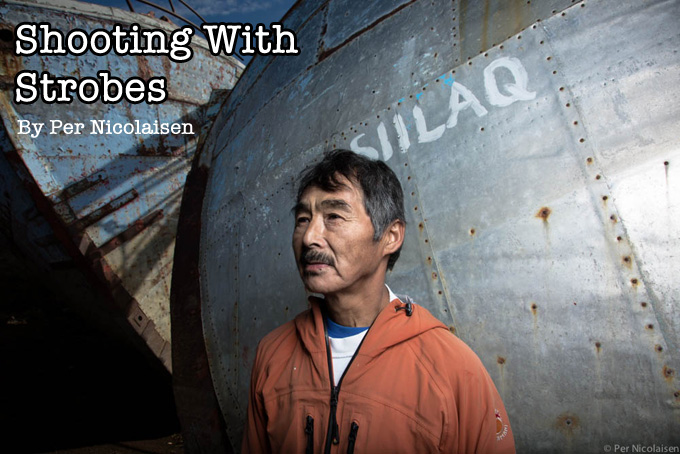
Hello from Greenland! I want to give a little introduction to strobe photography using battery power pack strobes. I made this article in a brand specific example using the Profoto 7B 1200w power pack because I find it to be the easiest way to introduce strobe photography. Battery power packs of other brands are very similar in usage.
I am not an expert or even experienced strobe photographer but I want to give my contribution this wonderful website that have given me so many great articles ever since I started to follow Steve Huff right after the M9 was announced. I always want photography to be challenging and strobe photography seemed like the next exciting photographic venture into the unknown.
I’ve never previously been interested in strobe photography or portraiture for that matter. I’ve always done everything I could to avoid top mounted camera flashes, I hate the look, and to some extent I still do. I have always chosen depth of field with fast lenses to make the images “pop” or in other words using fast lenses to make the images appear 3D in a 2D medium. The same effect can be achieved using light instead of depth of field. I eventually became more interested in strobe photography after seeing a lot of great professional photographers work and I also enjoyed a lot of the images posted in flicker group “strobist”.
I found it quite difficult to find a starting point, all I knew was I wanted something powerful and battery powered strobe to take outdoors. I quickly came down to two battery power packs brands that I found interesting(out of a lot of great brands). Poul C. Buff “Zeus” series a great value for the money or the expensive and renowned brand Profoto and their “7B 1200w” battery power pack. I called my danish dealer that had the profoto 7B on sale and decided to jump at the offer, sell my beloved Leica Noctilux 0.95, and lay down a total of 9.000 USD for a hole package to get started in strobe photograph which included:
Profoto 7B 1200w battery power pack
By the master control knob (14) you control the total power/level of light out of the two lamp sockets(12,13). This power pack allows asymmetrical and symmetrical power distribution out of the two flash head (12). This basically means there is a button to either halving the power of the second lamp (asymmetrical) or identical power(symmetrical). This can come in handy if you have your main light on your subject and use the second lamp to creatively enhance the subject, for example from the back or above the subject. I done most of my portraits with a single light and use the sun as my “second light”. To give you an idea of power of this battery pack, a top mounted camera flash with AA batteries output about 60-90w (anybody correct me if Im wrong) compared to this battery pack that outputs 1200w which means it out powers the sun for a tiny brief moment. I would love to read peoples opinion and remarks about other brands in the comments field below.
– Two pro B flash heads (includes 4 meter cable each to connect to the powerpack)
– Two stands, Manfrotto flash head stand model 1004BAC
– One additional 5m flash head cable
– Pocket wizard
Receiver and transceiver for wirelessly triggering the power pack from the camera (connects to 7 on the power pack)
– A Light meter
The light meter is where all the key information is. I use my light meter connected to the power pack with a cable to trigger the flash and adjust the power to my ideal setting. You can buy light meters with build in wireless triggering that is compatible with pocket wizard and get rid of the cable.
– Light modifier
Now I needed a light modifier to soften the harsh light from the bare bulbs. I choose one 2×3(60x90cm) softbox that mounts on the flash head to start off with. All Profoto’s light modifiers claps easily directly on the flash head.
Keeping things simple
Its easy to overcomplicate things and make a advanced setup. You can indeed make a spectacular looking portraits using multiple lights sources but I prefer to use one light and the sun. For me that is complicated enough. Using strobes in the outdoors two factors needs to be acceptable: low wind and no rain.
Setting up
The Camera
Even though I love Leica M I find a DSLR with a zoom lens to fit my needs best for strobe photography. An important aspect of shooting in sun with strobes is “x sync” which is a given cameras ability to synchronize with a strobe. The faster the shutter speed a camera can synchronize the better. I use Canon 5D mark III that has a highest synchronization of 1/200th of a second. If I use a higher shutter speed with a strobe, a big black ugly line starts to appear on the button of the image and heres why. A strobe fires at around 1/3000th of a second and in that super short moment the WHOLE censor in the camera needs to be totally open. The shutter mechanism of the Canon 5D mark III stops to expose the whole censor beyond 1/200th of a second hence the black line visible in image.
I do most of my strobe photography in midday bright sunny conditions. I know It doesn’t seem necessary with strobes but I enjoy the look. After I have found a person willing to be photographed and a location, I set up the gear. I then meter the sun. A sunny bright summer midday in Greenland I often measure to ISO 100, 1/200th, F/11. I want my strobe light to offer one F stop faster light:
Typical Day light ISO 100, Shutter 1/200th of a second and F/11
Strobe Light I dial in to ISO 100, shutter 1/200th of a second and F/16. One stop faster. This darkens everything accept the subject and gives a dramatic image and deep blue sky. I don’t always choose this approach as it depends on the location, weather and the subject I photograph. I like to set up the softbox close to the subject, preferable within 1 meter when I do head shots. I don´t like to put up “rules” about how the light should be but many put out up the main light in a 20 degree angle and 1-2 feet higher than the subjects head. This way I like how the light “travels” across the face when I put up the light in a angled position, highlighting one side of the face and shadowing the other side. That way you get a sense of depth and “see” the subjects unique conjures instead of a “mug shot” kind of portrait where the main light points directly at the face. You can control the light fall off with F stops. The higher the F stop, the higher the light fall off and that way you control how dramatic you want the difference between light and shadow but keep defraction in mind when using small apertures. Remember to keep metering the strobe light. When I measure I put the light meter directly under the chin. If the person moves a little make sure your exposure is correct by remeasuring and adjust your light accordingly.
So what is challenging about strobe photography?
I see strobe photography as one part technical, one part creative and one part coincidental. When I set up the light I always have a vision about the image and how the subject is lit. After I have taken the images I had preplanned I try unexpected/unusual angles to shot or sometimes the subject somehow seems better lit another way than I had planned. The point is I always keep a open mind to creative impulse as I shoot. Sometime it leads to mistakes which is also welcome because I learn from mistakes. Even though I have limited experience I hope I have given the reader some sort of insight and I hope more experienced strobe shooters can ad or correct some of the info I have given in the comment field below. I also welcome other online resources about strobe photography in the comment field.
Regards
Per Nicolaisen
–
–
–
–
–
–

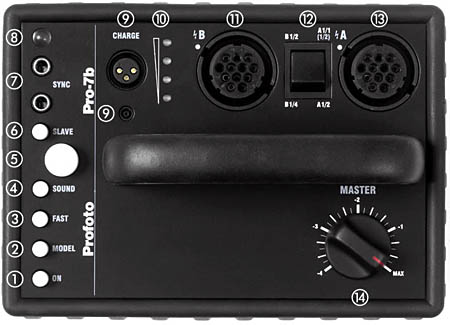
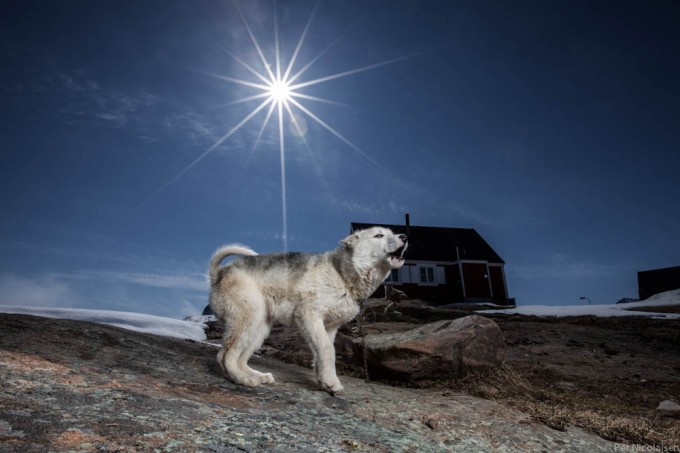
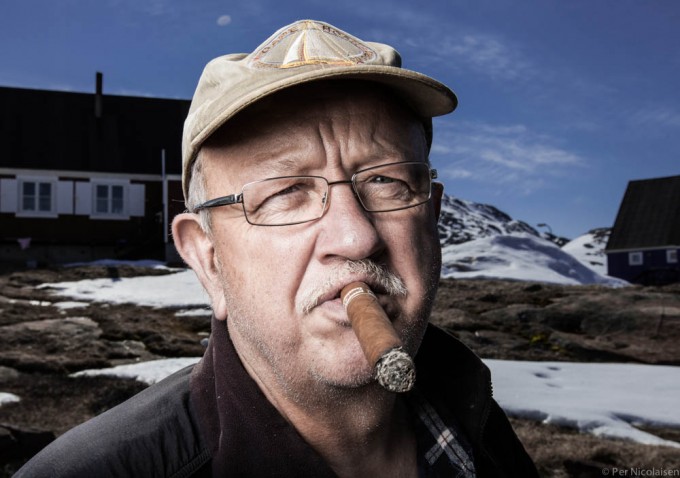
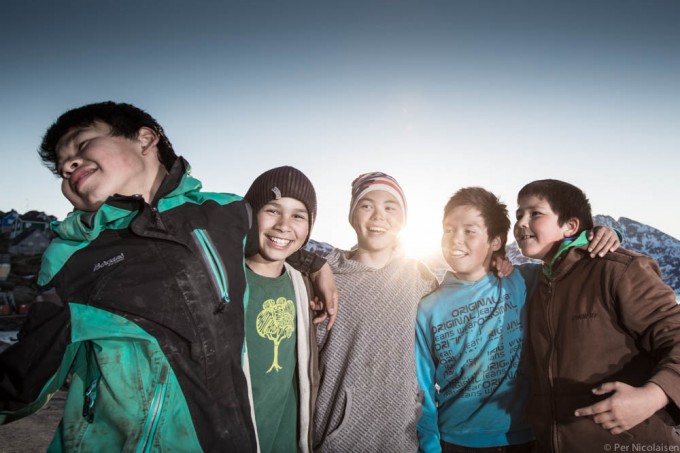
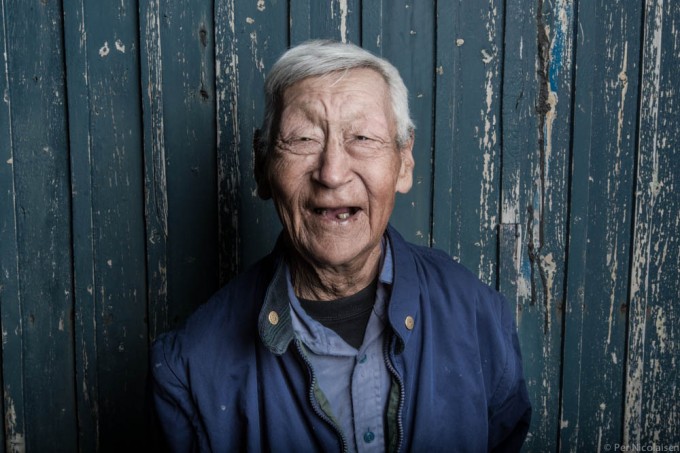
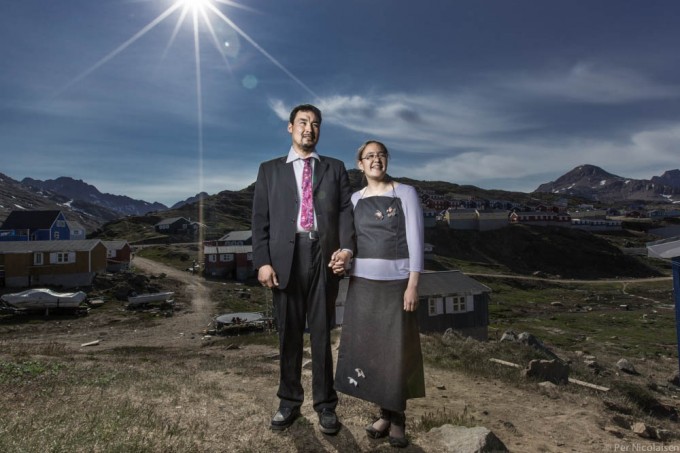
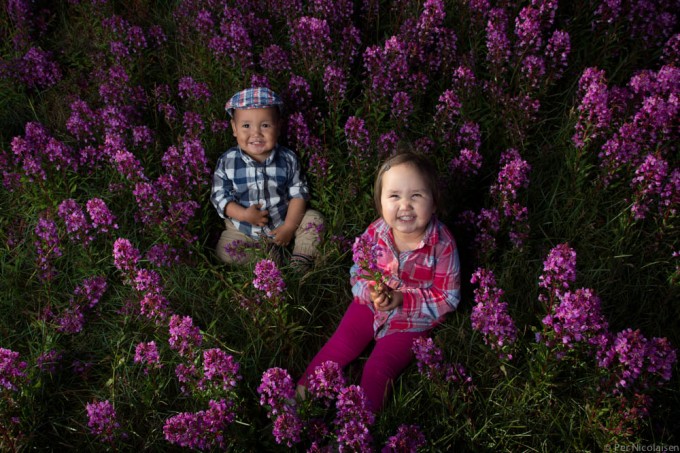
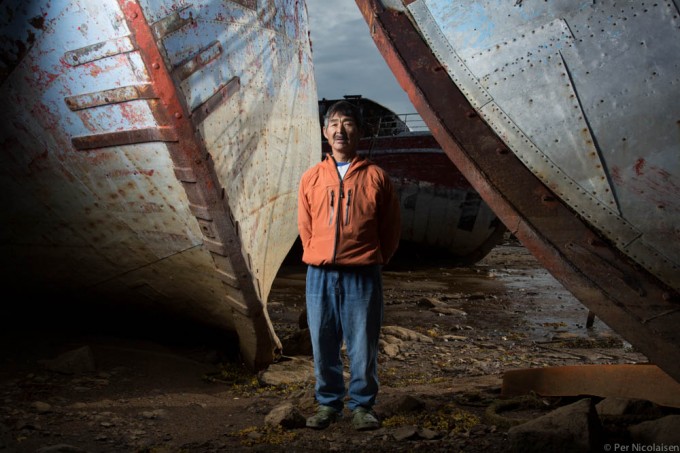

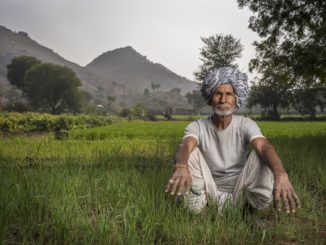
lovely photos ,espcially the dog, the kids,the couple and the man between the boats
Great shots – for some reason I love pure white flash in sunlight shots like these. It’s such a very different look and the subject matter (and background) is something we don’t see every day.
I hate using flash in general – much prefer shooting wide open – but I might have to have a go at this type of shooting after all 🙂
Great shots!!
Wonderful lighting setup at the Last image. Clever!
thx for sharing
Really nice pictures…but…IMO, the problem with the Profoto light is it is TOO beautiful. There is just something about it that separates the viewer from the image I think. It tends to make everything look like a contrived commercial.
No offence meant to the photographer here, the pics are clearly great photos. Personally though I would have preferred the careful control of natural light though.
I know what you mean. It don´t always like the look either but it is nice to complement everyday photography with this “commercial” look and apply it into your own way. You can also put warming gels on the light which is a yellow translucent plastic so you don´t get the clinical white light.
Nice photos/light The picture of the guy whit the cigar is great!
greatings Jens
Good article, great pictures, thanks. Couple of comments.
Not exactly a affordable thing to try with your example. This article has made me want to try this out with the Fuji X100 high sync speed and using a second hand Nikon SB flash as a slave. Could this be a good way to start to experiment?
What would you recommend to someone who wants to try flash / strobe photography but does not want to sell their Noctilux?
I was thinking that the fuji x100 high sync speed you can buy smaller more affordable flashes. However my knowledge is very limited when it comes to flashes.
You can get some great results as shown in your examples.
Thanks
John
Good article, great pictures, thanks. Couple of comments.
Not exactly a affordable thing to try with your example. This article has made me want to try this out with the Fuji X100 high sync speed and using a second hand Nikon SB flash as a slave. Could this be a good way to start to experiment?
What would you recommend to someone who wants to try flash / strobe photography but?
I was thinking that the fuji x100 high sync speed you can buy smaller more affordable flashes. However my knowledge is very limited when it comes to flashes. However you can get some great results as shown in your examples.
Thanks
John
love the look and the content Per!
Bruce
from BC
Great photography like this illustrates why Nikon and Canon have the edge and will continue to have the edge over the Sony’s of the camera world.
The new Sony a99 looks to be a great camera, but because of the lack of third-party support for professional flash gear and an increasingly old and outdated lens catalog, Nikon and Canon will continue to be the logical choice to build a photographic system and career with and for others that wish to do more with their photography than just take pictures of the grandchildren.
Thank you for taking the time to contribute this article, and beautiful photos!
Nice subjects in the pictures and good sharpness + overall exposure but totaly no composition.
All subjects are placed in the middle of the frame. -> Boooring !
If you would use the rule of thirds for example the pictures really would be stunning 🙂
Keep shooting with strobes ! It so nice to see some pictures over here with underexposed backgrounds and nicely lit subjects.
There are no rules!
The fact they are this way makes for an interesting series.
Thats the same statement I always hear from people with blurry pictures… 😉
“I did make them that way so they look more interesting”
Btw I didnt say that there are rules to follow but that the rule of thirds would make his series more interesting.
(only my opinnion)
Fotoingo, thanks for your opinion. All the images I had composed with rule of thirds(the subject not in the middle) but I found those not so interesting. I choose those images where the subject is in the middle because of the background or “the world around” was most visible. I do appreciate that all my choices will not be “liked” but this was my creative choice 🙂
And I´m okay with that 🙂
Have fun shooting !
Per, fantastic photos! You choice of lighting equipment is quite ambitious; the results pay off with your ability to get otherwise unobtainable images with appropriate mood. This article serves as a challenge to those who are unfamiliar with, or refuse to work with flash. Painting with light that you bring to the site simply opens up the possibility to get the image you have in mind, instead of relying on available light and high ISO camera bodies.
I always have a flash in my bag whenever I’m out shooting. For M-bodies, I find the Vivitar 285 with a safe-sync an excellent choice. Also, I NEVER shoot with the flash on the hotshoe; I prefer it tethered with a one-metre cable. The deer-in-the-headlights look disappears straight away, and if seamless light can be measured for, the viewers will never know.
You ask for further information. Joe McNally’s “Hot Shoe Diaries” is an excellent source for beginners, and those who want more in-depth analysis of lighting technique. He uses Nikon systems, but most of the book works for all flashwork.
You might want to experiment with the use of gels next, especially if colour photography with flash is your desire. Check out how the straw gel in particular warms the flesh tones of your subjects.
Finally, as was noted above, it would be a great idea for this site to explore flash work as an alternative to the continuous pursuit of high-ISO photography. Especially for night shots, where artificial light is the only source of illumination, flash can be used to smooth out the shadows and stop the blowing out of highlights. Per has more than adequately shown us the door with his excellent experimentation.
Thanks, I will be testing gels for my next shot.
Just amazing .shots and concept..
Here`s part of my post on Ricoh Forum
3. GXR as the only APS-C mirrorless interchangable lens camera has the option of using lenses with leaf shutter (A12 28, A12 50, A16 24-85) thus giving you flash syncro of 1/1000 from f2,5 to f6,3 and 1/2500 to 1/3200 from f7,1 to f;22. What that means in sunshine scene underexposed a stop or two and fill-in flash one can only imagine.
Flotte billeder Per. Hilsen Stanis
“Strobe” is one of those words that has been misused so often, that it’s come to assume the misused meaning for many people. A strobe is a rapidly flashing light. http://en.wikipedia.org/wiki/Strobe_light
We’re talking about a speedlight or electronic flash here. Some Canon flashes do have a “Stroboscopic mode” that shows several minute flashes continuously to view the flash effect.
But I understand you are not a native speaker. By the way, Canon says you are not limited to 1/200 if you have a top model speedlight.
HIGH-SPEED SYNCHRONIZATION (FP FLASH)
The FP flash mode of the EX series of Speedlites (220EX, 380EX) allows the EOS Elan II/IIe, Rebel G and EOS IX SLRs to synchronize E-TTL or FEL flash exposure at *any* shutter speed.
Technical terms and details aside, this is a wonderful collection of images, and I thank you for posting, and giving away your “secrets.”
Hi Per, some very very nice images! Well done and thanks for sharing:-)!
This topic is such an important one. Photography is light. It’s that simple. The problem is that strobes and speedlights are never talked about here. It is also the reason why DSLR’s are still superior to APS-C and Micro 4/3rd’s cameras. DSLR’s simply support strobes and wireless triggers. Smaller rangefinder-type cameras do not. I am hoping that this is a dialog that can be discussed on Stevehuffphoto and that camera manufacturers will sit up, take notice, and thouroughly integrate these technologies into their smaller sensor cameras in the future. Come on Sony and Fuji. I have faith in you!
You right.High X sync speed is very important and APS-C and smaller censor cameras should be able to X sync faster than full frame but camera manufactures do not seem to put this high on their feature list. The new sony RX1 look interesting with a leaf shutter that should synchronize at its maximum shutter speed 1/2000 of a second. Strobes on thinks only in F stops so shutter speed is the only value to compensate. The new Leica M is a bit disappointing as it also has the highest X sync at 1/180th of a second and I was hoping with the live view and electronic shutter should have been able to synchronize at a higher speed.
David (Hunter), you say “..It is also the reason why DSLR’s are still superior to APS-C and Micro 4/3rd’s cameras..” ..huh? ..APS cameras – not all, perhaps – have hot shoes for a strobe (flashgun). So have (some) micro4/3 cameras. What’s the difference between an m4/3 (say an Olympus OM-D) with a strobe and a full-frame SLR with a strobe (say a Canon 5DMkII)..?
None that I can tell.
The Leica M9 (and M8, etc) also has a hot shoe (..every manufacturer’s shoes are the exact same dimensions which Oskar Barnack set with his original Leica, by the way!.. except for some weird Sony ones..) although Leicas themselves fire a pre-shot flash before the main flash (ugh) to assess correct exposure (though the Olympus OM-2 got it right with just a single flash back in 1976 ..that’s 36 years ago).
I’m just fiddling with the contacts on my Olympus F280 flashgun from long ago (..the one which matched with the Olympus OM-4Ti, of blessed memory..) which was “..the world’s first electronic flash to permit full synchronization at all focal plane shutter speeds” so as to use that with my OM-D.
How does the F280 manage it? ..It fires several short-duration flashes to continuously cover the entire travel of the focal-plane slit across the film or sensor. There’s nothing, then, to stop photography with a focal-plane shutter at 1/4000th, that way. (Other manufacturers have since caught up, and offer their own multi-flash pocket strobes ..though not Leica, strangely.)
So in what way, David, are SLRs “..still superior to APS-C and Micro 4/3rd’s cameras..” regarding flash, exactly? ..Maybe I’ve missed something..
yeah you missed the sync speed…..
and wireless triggers. http://www.pocketwizard.com/products/transmitter_receiver/minitt1-nikon/
David, I agree with your comments. I wish there could be more discussion of lighting here. Almost 100% of my photos are shot with added light – strobes, speedlights, or reflectors. In the words of my creative lighting instructor, “Photography is cameras; good photography is lighting”. Added light should be thought not so much as an accessory but as an essential element to constructing a photograph. Especially when shooting people, which is my primary subject, the quality, quantity, and direction of lighting is so important for an image, in my opinion.
In a time when so many of us want to carry less, it’s a great reminder that being flexible and open to carrying more can also deliver exciting results! And if you’re driving in your car – who cares what you have in your boot! Love the outdoor strobe look!
need to post some leica m/m9 with strobes!
Brilliant article.
So nice to see something technical & aesthetically pleasing.
All the best Per.
Fantastic great work thanks for pointing out another great technique in photography great pics allot of pop or 3d surrealism
If only I had a noctilux to sell or keep
Fantastic stuff. Totally out of my wheelhouse and I’m so appreciative of the introduction. I like the fact that you went with the best stuff as well, I believe in that, as inspiration as well as quality and dependability. Always wondered about how easy it would be to get on with Profoto stuff and what to expect. Boy but I’d love to know how this stuff can work with Leica Ms. But maybe that’s a project for you for another time.
Thank you,
db
tried a 4 flash system/pocket wizard in my mates studio…work absolutely fine with leica m9
Profoto? Wow.
nice work ! gotta love the canon dslr’s 🙂
Great and very informative article, and some nice shots too.
I also enjoy shooting with strobes, but a while ago i sold all my DSLR gear to found the M9 + lenses. So at the moment i am looking for a strobe solution that would work with the Leica system.
Do you have any exprience with the M9 vs. Strobes?
Best regards
Hans
No experience with the M9 and strobes. The M9 should be a great strobe camera but the shutter x sync is only 1/180 but you can compensate by putting a ND filter on the lens for lowering the F stops so you can achieve same effect with day light vs strobe.
Thanks for your input.
With my old DSLR i used speedlites, set to high speed sync. so high shutter speeds was never a problem.
Do you know if the Profoto system offers high speed sync?
God vind, deroppe nordpå 😉
Hans
Great article. For years I have been thinking about adding a strobe to my kit. I have always admired the amazing qualities that you can achieve with it. Time to look into it. D!RK
Im glad you are looking into to it. The results is always unexpected and rewarding. It definitely adds to the fun of photography.
Now I see what you’re up to Per! Very cool, especially the two Paakkannaq images and the wedding day one. Love the look you’ve achieved. I’ve never ventured into controlling the lighting, choosing instead to take advantage of what’s around me. But I respect the art of this.
—Peter.
Hi Peter, haven’t had much time to share images. I appreciate that you like the look.
Thank you for sharing your pictures, Per Nicolaisen. The first picture with article title and the last picture are my favorite ones. They tell story.
Stunning images,thanks for sharing
Love the last shot in the boat yard!
nice sharing 😀 i love strobbist photography 😀
Some killer shots here !